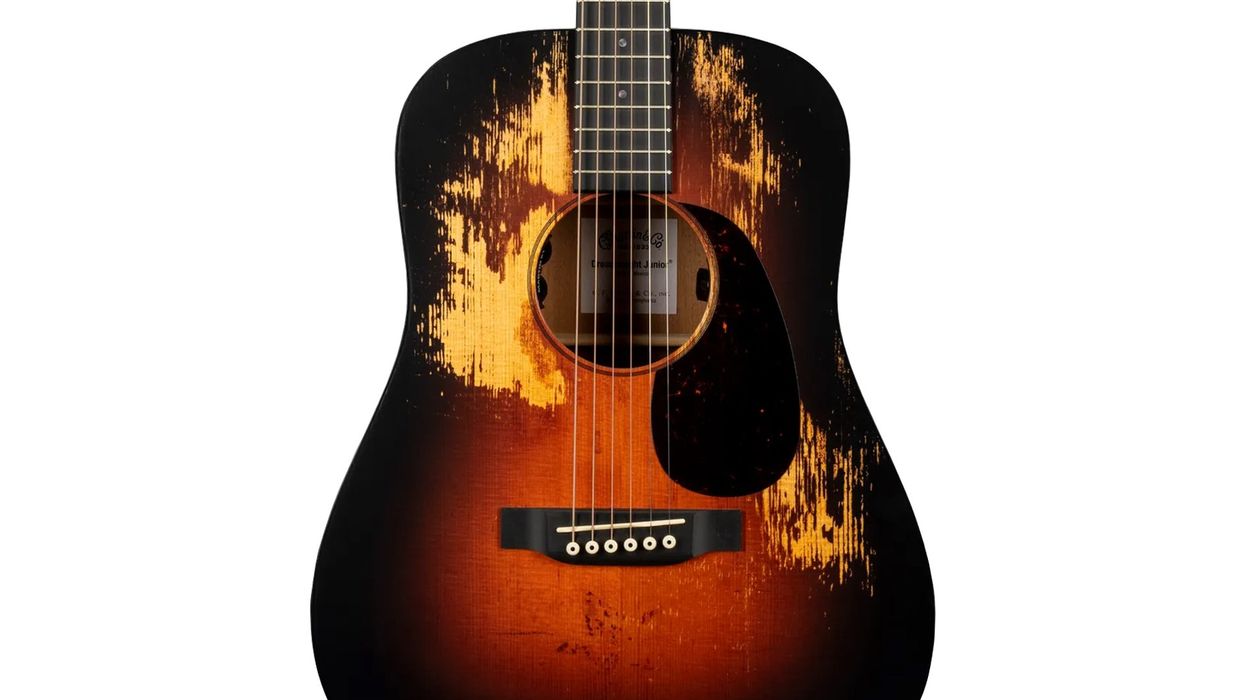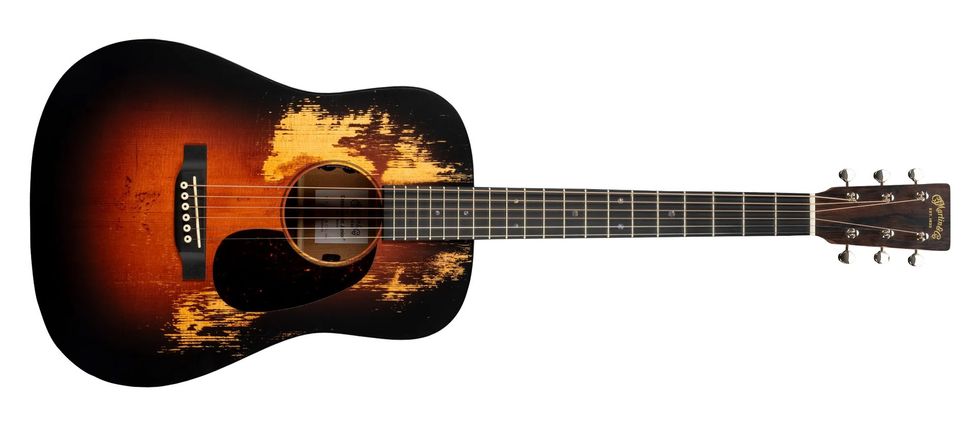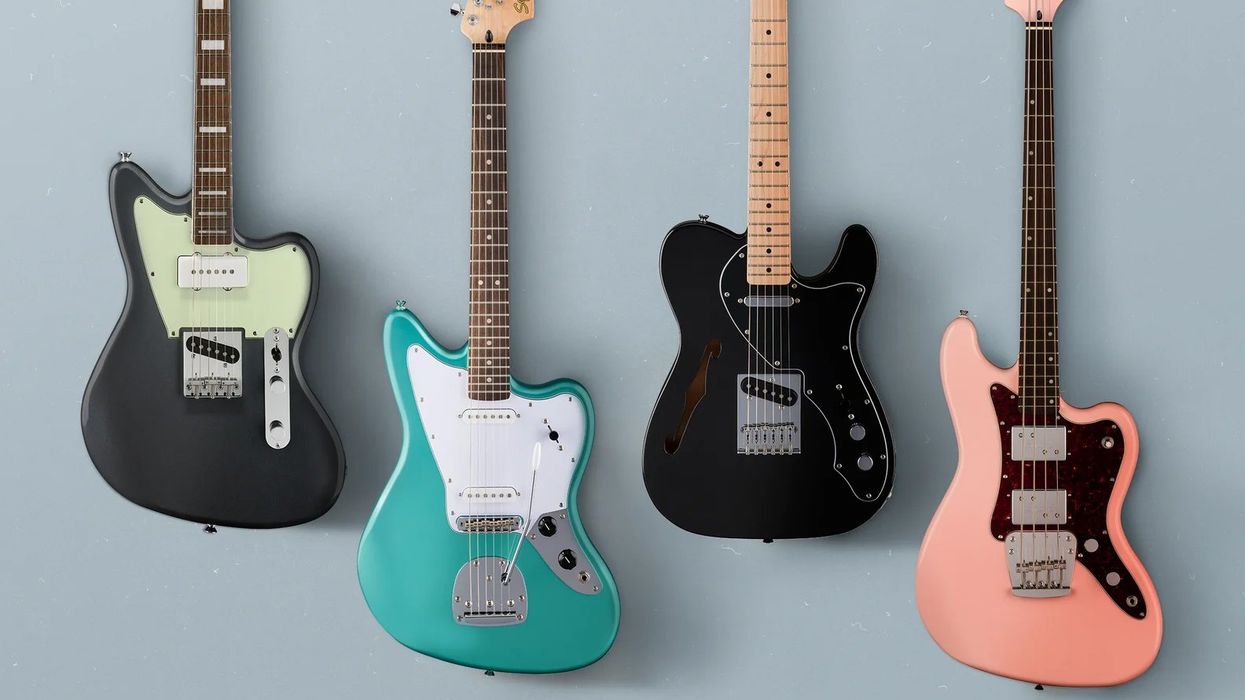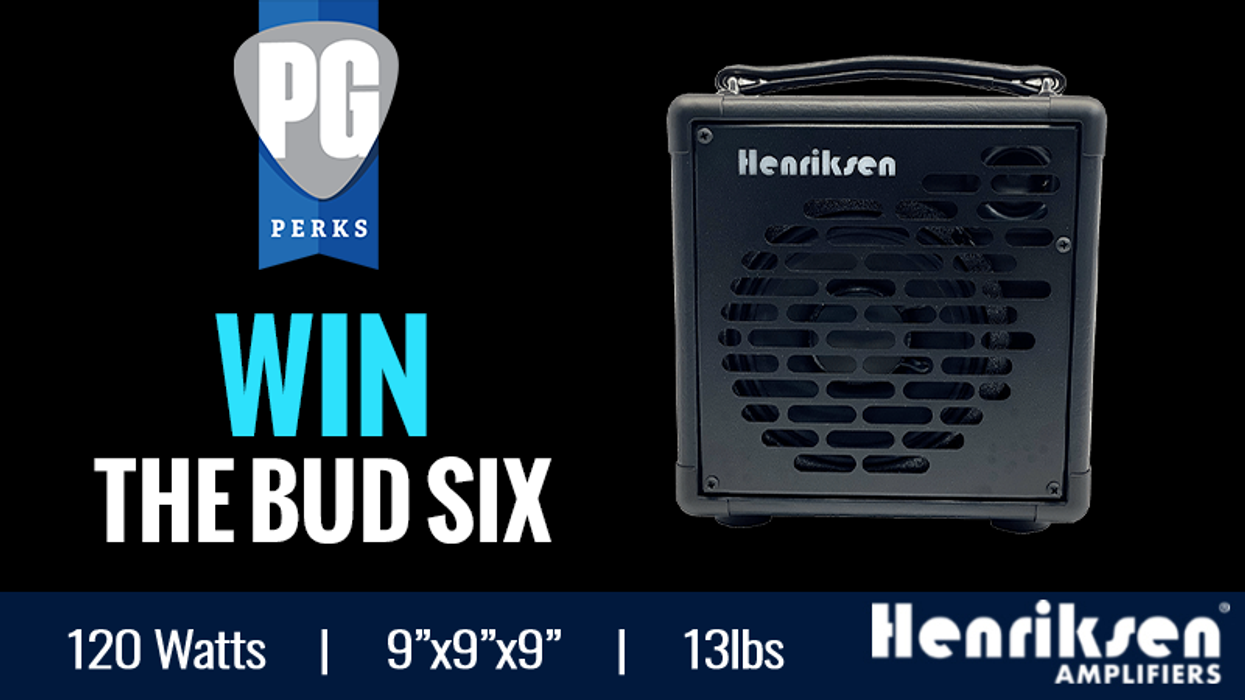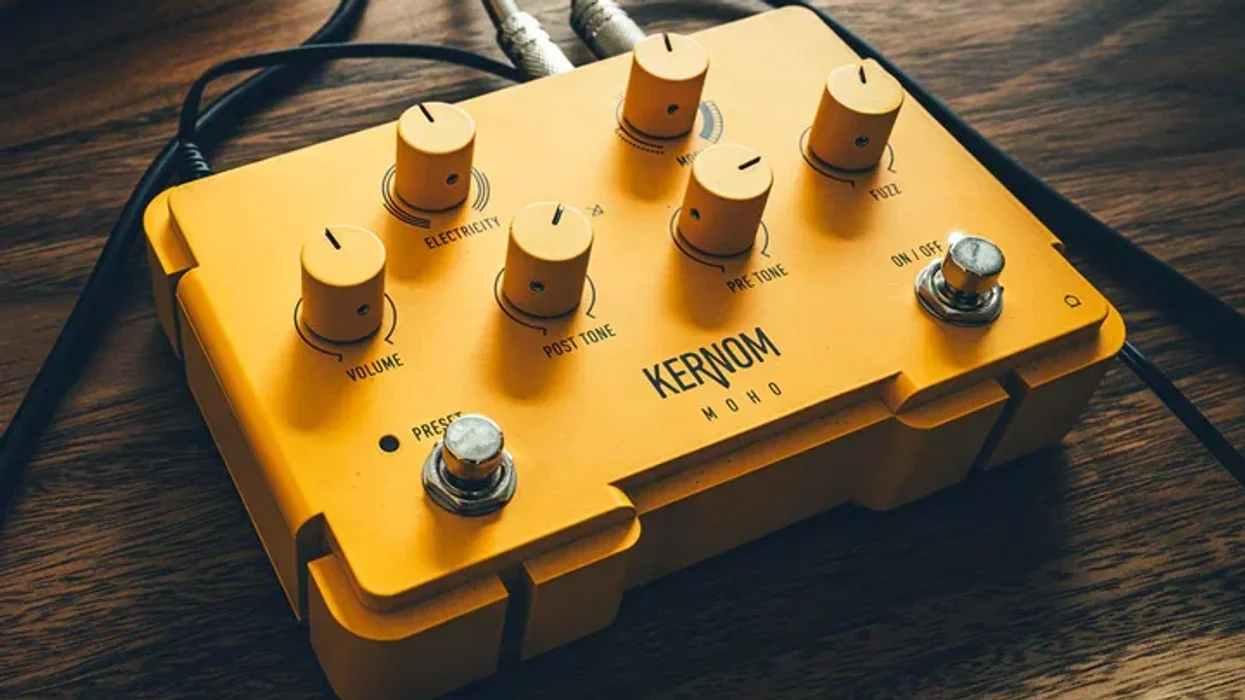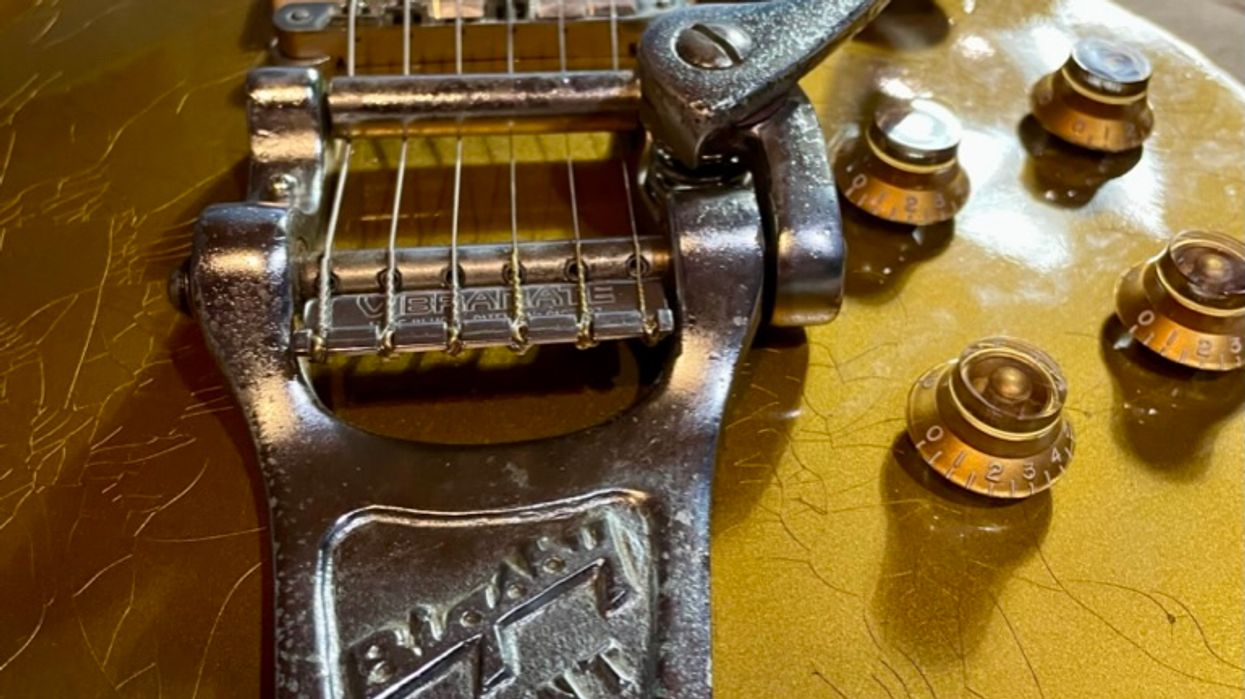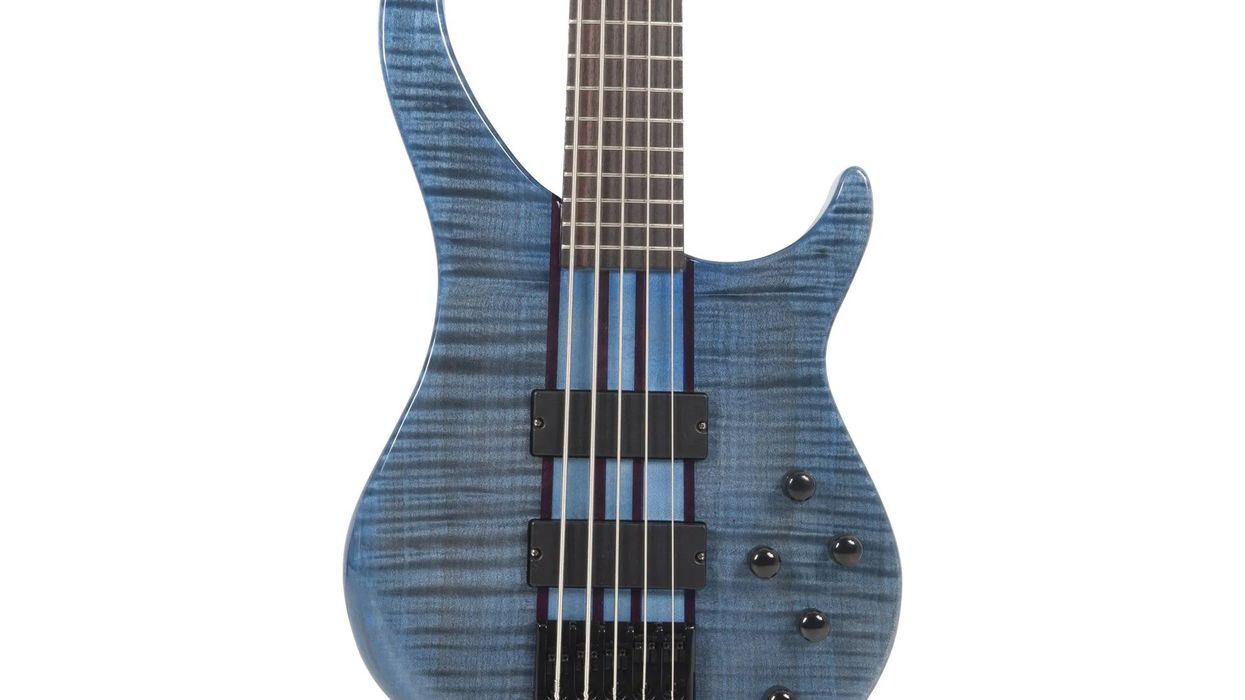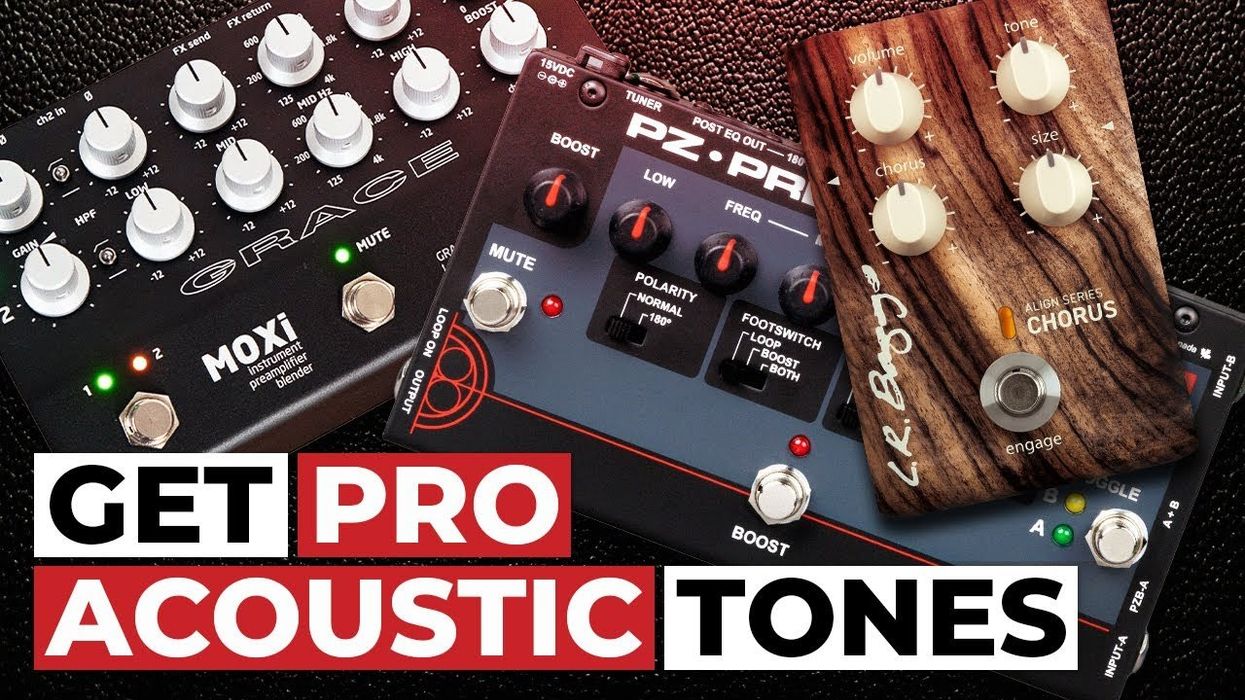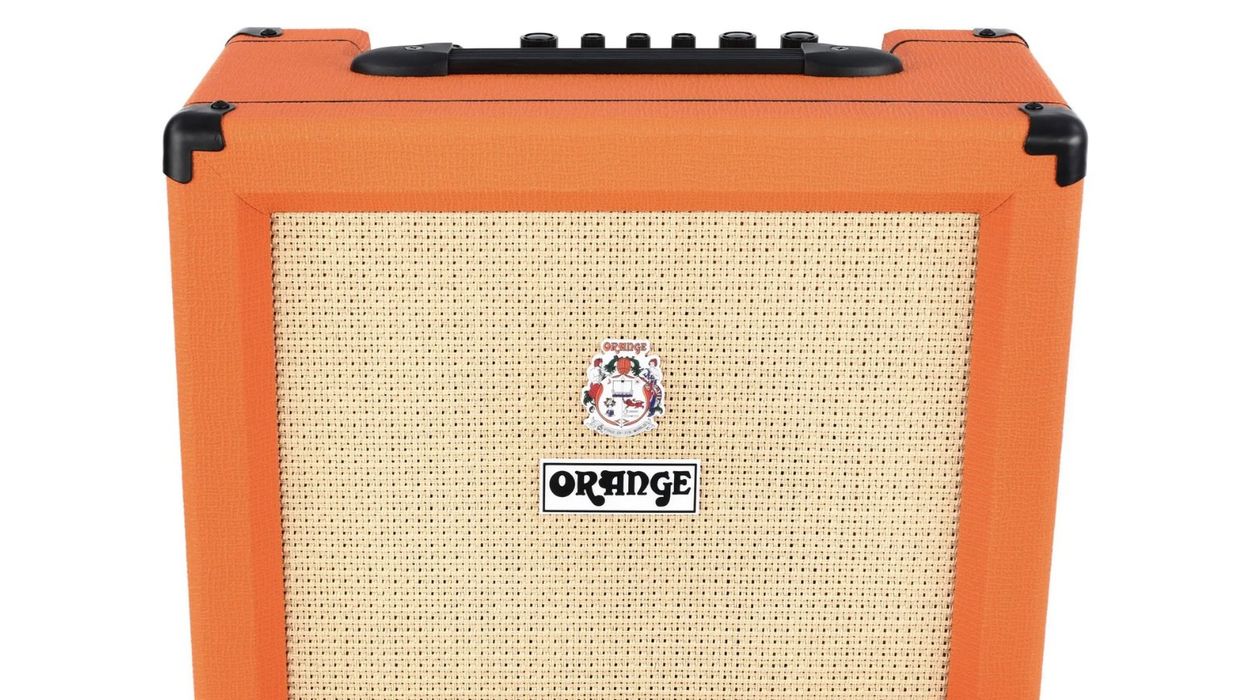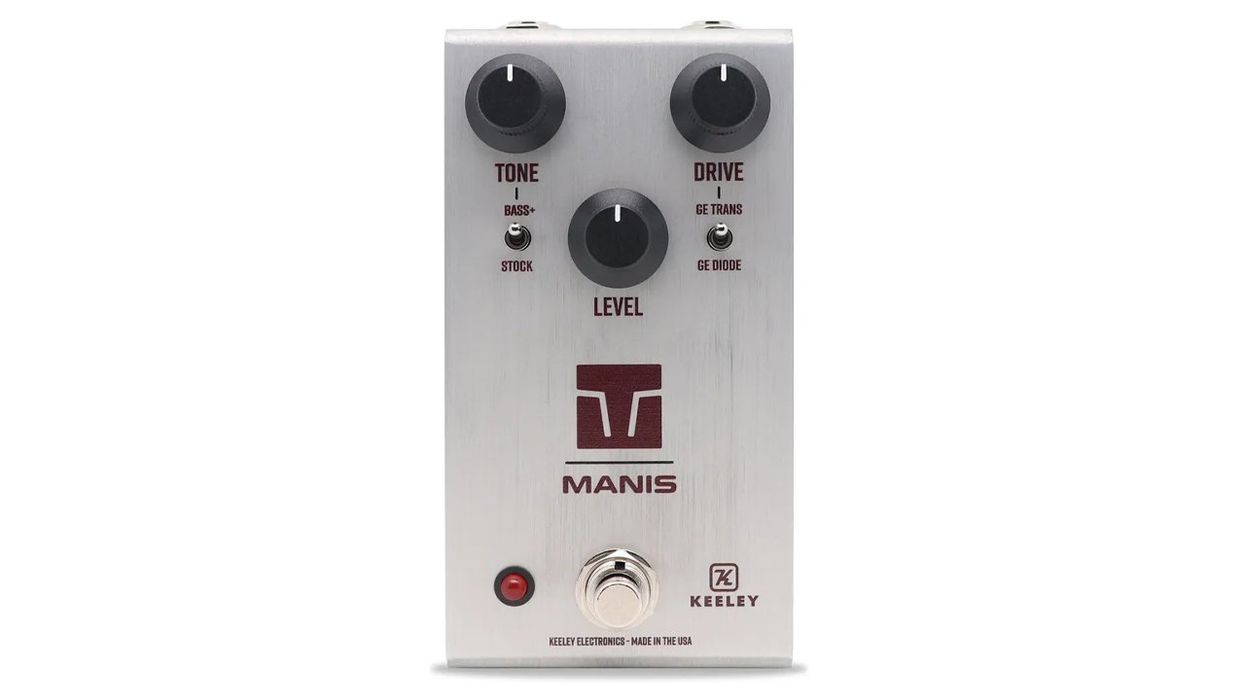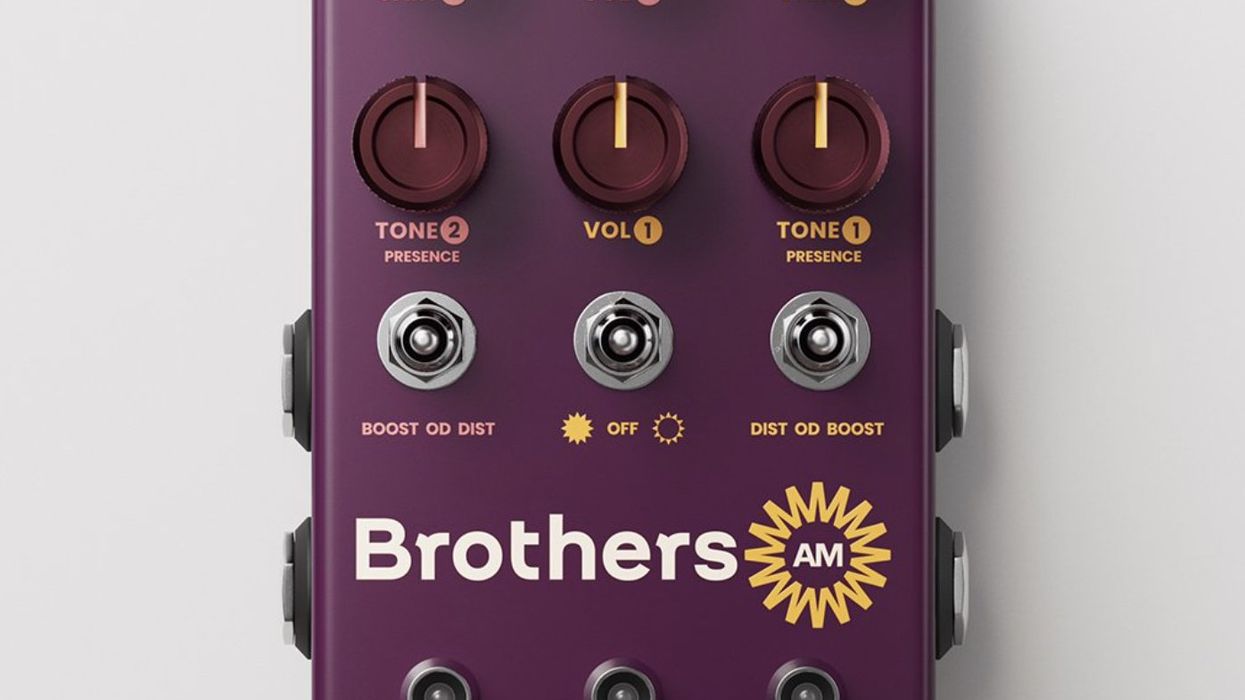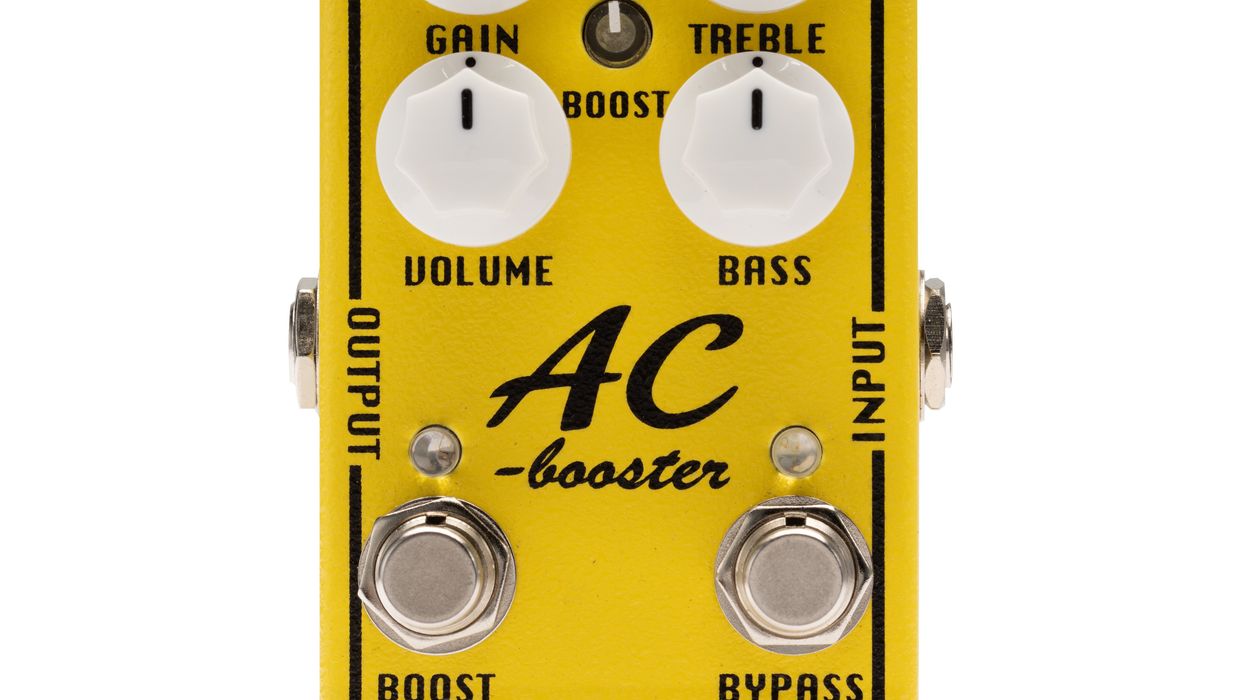Isn’t it odd that more players don’t have an EQ pedal on their boards? Placed near the front of your signal chain, EQ can radically alter the response of overdrives and fuzzes. Near the end of the chain, EQ can reconfigure tones or correct trouble spots. Maybe some players scorn pedalboard equalization because the graphic EQ stompboxes of the ’70s and ’80s often sounded noisy and nasty. But that’s certainly not the case with Feed Me, an innovative analog EQ pedal with countess potential uses.
and fuzz circuits.
Resistance Is Utile!
Feed Me features four color-coded rotary switches, each populated with12 different resistors or capacitors. (Remember, capacitor value determines cut-off frequency, while resistor value specifies the amount of cut.) The left-hand switches determine the depth and cut-off frequency of a high-pass (bass-cut) filter, while the right-hand switches control a low-pass (treble-cut) filter. These are passive controls that ordinarily require no power. But Feed Me also includes an active boost stage and tone knob, so a 9V power supply is required. (Feed Me has no battery option.) Inside the pedal’s standard BB-sized enclosure is a circuit board featuring hand-soldered through-hole parts. It’s a nice build.
Ratings
Pros:
Endlessly useful. Quality build. Nice price.
Cons:
May bewilder EQ novices.
Tones:
Ease of Use:
Build/Design:
Value:
Street:
$155
Fuzzrocious Feed Me
fuzzrociouspedals.com
There’s more than enough gain available via the boost stage (volume control) to compensate for heavy bass or treble attenuation—enough, in fact, to slap an amp into overdrive. Meanwhile, the tone knob fades between bass and treble settings, its effect varying according to the rotary switch settings. And while there are no dedicated midrange controls, the tone knob delivers many midrange contours across its terrain.
Feed Me is subtle but effective on clean-ish sounds. It can tame shrill single-coils, clarify boomy humbuckers, make a P-bass sound more like a J, or vice versa. But Feed Me is especially gratifying before or after drive and fuzz pedals.
Fuzz on Fire
I paired Feed Me with a Fuzz Face clone. Fuzz Faces have gain and volume knobs, but no tone controls. Did Feed Me summon new sounds from this simple fuzz circuit? Hell yeah! In front of the fuzz, Feed Me shaped the pedal’s response. Trimming lows was especially useful, yielding brighter, cleaner tones and lending definition to a sometimes woolly-sounding effect. Feed Me is even more dramatic post-fuzz. There it can mimic the tone stacks of countless drive and fuzz circuits, from Muffs to Screamers and beyond. (The pedal’s documentation includes many such tone recipes.) The new shades you can conjure from old-favorite overdrives may surprise and inspire you. Feed Me also works great at the tail end of your effects chain, applied like mixing board EQ.
If you’re thinking “sounds like a great pedal for rocket surgeons,” reconsider. It’s perfectly possible to wrangle Feed Me with minimal tech knowledge. My favorite method is to grab the two low-cut knobs and spin them till things sound great, and then repeat the process with the high-cut knobs.
The Verdict
Once you get the hang of it, Feed Me can coax many new sounds from gear you already own. Onstage, you could click it on to create an alternate character for your guitar, amp, or pedals. But Feed Me shines brightest in the studio, where it can help you concoct the perfect sound for a production in progress. Feed Me is unique. Its build is solid. The price is right. And the potential applications are legion.







